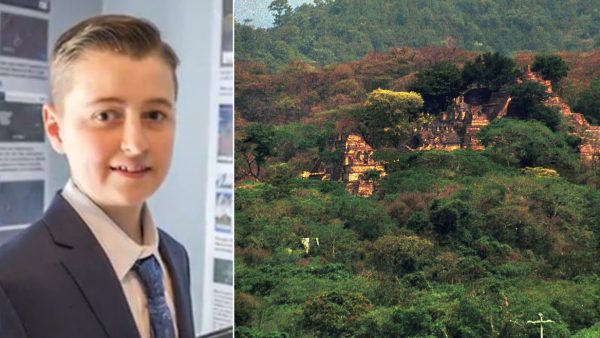Around May 9, this year, the whole world knew that a Mayan city had been discovered by a Canadian teenager based on the theory that this Mesoamerican civilization had chosen the sites to establish their cities, following the constellations.
William Gadoury, a 15-year-old from Saint-Jean-de-Matha, Quebec who declared himself a lover of the Mayan culture, said he found 22 Mayan constellations in the Codex Maya de Madrid (ancient Mayan codex confiscated in the sixteenth century by catholic priest Fray Diego de Landa). When placed on top of a Google Earth map, he noticed that the celestial bodies corresponded to the 117 Mayan cities, and that the brightest stars coincided with the settlements considered the most important.
The youngster said that constellation number 23, consisting of three stars, had no exact relationship with the Mayan cities, and according to his theory, there should be a city, that would be number 118, in a remote location of the Yucatan Peninsula.
William initially presented his findings at a scientific conference in 2014 (when he was only 13 years old), having won the first prize in a local science fair with his project “Born of Heaven.” His presentation drew the attention of the Canadian Space Agency (CSA), which provided satellite images.
Daniel De Lisle, Project Manager of the Canadian Space Agency (CSA), said: “We realized that this kid needed some help, so the CSA gave him some satellite imagery to test his hypothesis, but the credit is all his. ”
After the CSA provided support to Gadoury, NASA and Japan’s space agency turned to look at his theory, and the news began to become viral on social networks and all electronic media.
What is a fact is that no scientist had noticed so far this correlation between the stars and the display of the Mayan settlements, much less had used such a new tool like Google Earth to compare it with something as old as a Mayan codex.
William has presented his work to two Mexican archaeologists, but these experts have not yet traveled to the site where the undiscovered Mayan city is supposed to be found.
Anthony Aveni, an astronomer and anthropologist who is widely regarded as the “father of modern archaeoastronomy” (the real pioneers of archaeoastronomy were the ancient Maya), declared that to try to impose a theory by overlaying a modern map of the stars on top of another map, is simply an act of creative imagination.
The archaeoastronomer praised the imagination and initiative of the teenager. “I think he is a very bright young man and an independent thinker. I hope he gets a college scholarship for his work,” he said.
Francisco Estrada-Belli, a specialist in Maya archeology of the National Geographic Society said it’s also entirely possible that Gadoury may have located a Mayan settlement by pure coincidence.
“I’m sure there are hundreds of Mayan sites yet to be discovered, scattered throughout the Yucatan Peninsula,” said Estrada-Belli. “The chances of putting your finger on the map of the region and find a Mayan settlement, are many.”
We have to wait to confirm whether indeed the point marked on the map by William Gadoury proves to be an undiscovered Mayan city. At The Yucatan Times, we will be following up on this note to keep our readers informed.
But in the meantime, it is clear that the other 117 Mayan cities precisely matched the location of the stars in the modern map of the constellations of our galaxy; and certainly the views of experts discrediting the young Canadian, sound more like envy than scientific arguments.
By Alejandro Azcárate for The Yucatan Times
Sources:






Comments are closed.